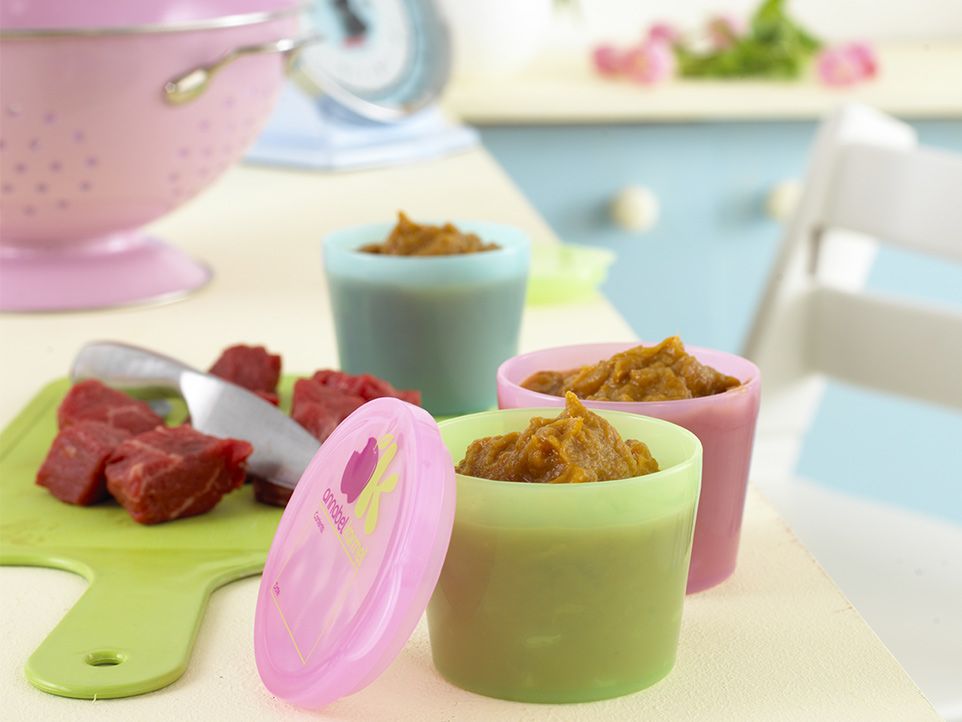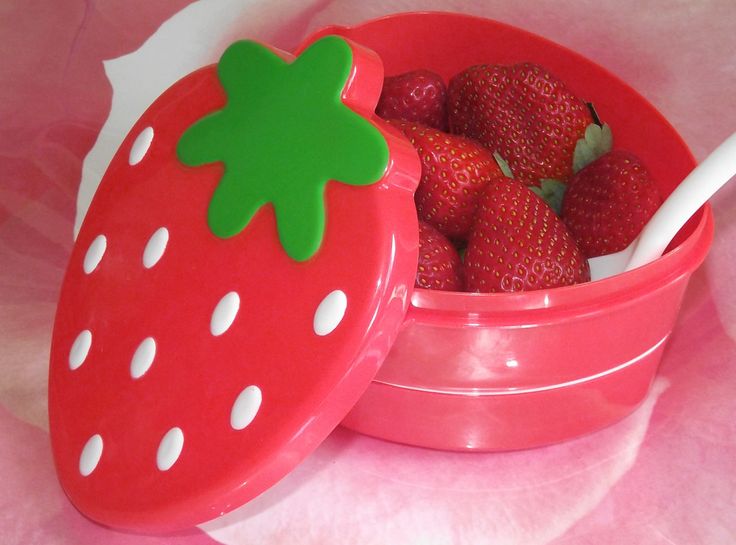Best food for baby goats
Caring for Goats: 15 Things I Wish I Knew Before Getting Goats
If you’re considering adding goats to your family’s farm – read this first! A list of everything I wish I knew before we got goats & a basic guide for just starting out!
Please note that I am not a veterinarian, and my opinions come from personal experience. Please research diligently before making decisions for your goats! Always speak with a trusted vet when possible. Remember, there is a lot of information on the internet, and a lot of it is misleading.
Caring for Goats: 15 Things I wish I Knew Before Getting Goats
I get countless emails asking me about goat care. One of the most common questions is: what should I know as a beginner goat owner?
When we first got Elderberry and Buckwheat, I had NO idea what I was doing: their sister, Rosemary, died from Coccidia, I had never heard the term “disbudding”, and hoof care, vaccinations, and feed were a mystery to me. I simply wanted to get some goats because I thought they were cute!
Table of Contents
- Caring for Goats: 15 Things I wish I Knew Before Getting Goats
- Coccidia
- Mineral
- Vitamin D Milk vs Milk Replacer for Bottle Babies
- Shelter
- Fresh Water
- De-Worming
- Hoof Trimming
- You can’t just have one…
- Wethers & Their Issues
- More about Raising Goats!
- The Best Resources for Goat Care
- Raising Goats: Keeping the Barn Clean
- More about Raising Goats!
- Grain & Alfalfa
- Free Range Abuse
- Pro-Biotics
- Wool & Winter Weather
- Disbudding & Dehorning
- Antibiotics to Keep on Hand
- Bonus Point: Baking Soda
Since then, I have learned so much about caring for goats: like what to feed, when to de-worm, and how to care for them during the different seasons. Goats are absolutely wonderful pets, and can add so much to your family’s farm!
However, it is a common misconception that goats are easy keepers – in fact, they are our most high maintenance animals. They require a close eye and lots of attention, so I thought it would be convenient to compile a list of things I wish I knew before we got goats – if you’re considering getting goats, please, learn from my mistakes!
They require a close eye and lots of attention, so I thought it would be convenient to compile a list of things I wish I knew before we got goats – if you’re considering getting goats, please, learn from my mistakes!
Coccidia
The goat version of Parvo. I had no idea what coccidia was, and my first goat Rosemary died because of it.
Coccidia is a parasite found in all goats. I don’t believe that it is true that goats only die from this due to bad conditions. Since coccidia is in all goats, the levels are generally manageable for the animals; however, when goats become stressed, or the weather starts to change, Coccidia levels can rise to dangerous levels and kill the goat.
Similar to the standard vaccination for parvo, some people opt to treat all of their newborn goat kids for Coccidiosis at exactly 21 days old, and again 21 days later, due to the 21 day cycle of the parasite. You can find more information here, here, and here.
Personally, I don’t think this pre-treatment is necessary, but it’s important to keep a close eye on this! If you have a baby goat with scours (diarrhea), it could very well be Coccidia!
Mineral
Goats need (must have!) mineral supplements for their health. These supplements make up for what is lacking in your area’s soil.
These supplements make up for what is lacking in your area’s soil.
While you can purchase mineral from any supply store, the best mineral supplement is one that is specifically developed for your area.
To find mineral that is specific for your area, visit your local large animal vet. They will more than likely have mineral for you to use.
Never feed a goat mineral that isn’t developed for goats. This is critical, goats are very sensitive and can suffer from toxicity easily.
Vitamin D Milk vs Milk Replacer for Bottle Babies
update spring 2018
This is my opinion after doing my own research and consulting with veterinarians, not breeders. Ultimately, you must do your own research and make the best decision for your farm.
I have read many articles stating how horrible milk replacement formulas are for bottle fed kids. It was said that milk replacer contained soy, and baby goats do not tolerate soy protein.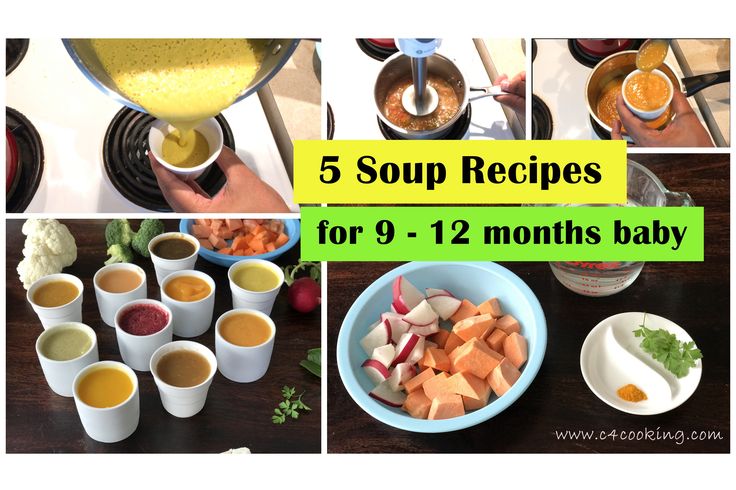
This is NOT true anymore. I’ve read many articles stating how horrible goat replacement formula is, and how it is almost certain to kill your baby goat. I do not believe this is true for formulas that are not specifically made for goats.
If you would like to bottle feed your baby goat milk replacer, it MUST be a formula specifically formulated for goats.
While I have been told by many many breeders that vitamin D cow’s milk is the best replacement milk for bottle fed babies, I don’t necessarily believe that to be true.
Whole, raw, cow’s milk straight from a cow is your best bet (aside from raw goat’s milk from a goat)! However, that isn’t feasible for most people raising bottle babies.
I am a part of a facebook group dedicated to goat health where veterinarians are the only people allowed to give advice. I trust this group, and every single vet there agrees that vitamin D cow’s milk is not actually the best milk replacement for bottle fed babies. This is interesting to me because it contradicts what I’ve been told and what I read.
This is interesting to me because it contradicts what I’ve been told and what I read.
So what should you bottle feed a baby goat?
Your best bet is to get raw goat’s milk from a goat, your next best is to purchase goat’s milk from the grocery store or use a milk replacer formulated specifically for goat kids. I have chosen to use goat’s milk from the grocery store. A more cost effective option is to use formula.
So why not Vitamin D cow’s milk?
I know many will disagree with me stating that cow’s milk is the best replacement. This is true if the cow’s milk is raw.
The cow’s milk purchased at the grocery store is actually different in fat and protein content than goat’s milk naturally is. Goat’s need about 4.5% fat, and “whole” cow’s milk contains about 3.25% (sourcing from veterinary group).
Keep in mind you must use a goat specific formula, and it must be mixed correctly. Bottle feeding a baby goat is a huge time commitment. You are acting as the mom, trying to emulate nature.
Bottle feeding a baby goat is a huge time commitment. You are acting as the mom, trying to emulate nature.
Feedings should be small, often, and warmed (over a stove, never microwave). If you aren’t up to the stress of bottle feeding, purchasing a dam raised goat kid is always an option, plus that goat will probably have a better immune system!
If you would like information about a feeding schedule, click here.
You may find this scholarly article to be interesting if you are researching this subject.
If you are switching from goat’s milk to formula, do not transition with an electrolyte mixer. This information is given on goat-link, and I disagree with that method.
Shelter
By now, you have probably realized, goats are a little more delicate than you first thought. This is true for their housing preferences too.
Goats prefer a three sided shelter rather than an enclosed structure because they need quite a bit of ventilation to keep their lungs happy.
Goat’s go to the bathroom A LOT, and they go right where they sleep. Unlike horses, pigs, and alpacas, goats don’t select a single spot as their bathroom, they just go, and go, and go creating toxic levels of ammonia.
Since goat’s lungs are very sensitive, the ammonia along with dust particles, will irritate them, it is best to have a covered, yet open area for them to find shelter.
Note: if an enclosed area is your only option, just clean more often, and add a bit of stall freshner to the floor.
I purposefully had my goat’s house built with a large door that we keep open as much as possible for this reason. I clean their house weekly, although sometimes I go a bit longer.
Many goat keepers clean their goat’s pen daily – I have found that mine are okay to go a week or two; however, I sweep and “pick-up” every other day. The most important thing is that their bedding is dry! When the bedding looks wet and dirty, I know it’s time to clean! Goats DO NOT do well in dirty conditions, they will get sick very easily!
Fresh Water
My friend Lylah from The Simple Farm has told me her secret to healthy happy goats is fresh water.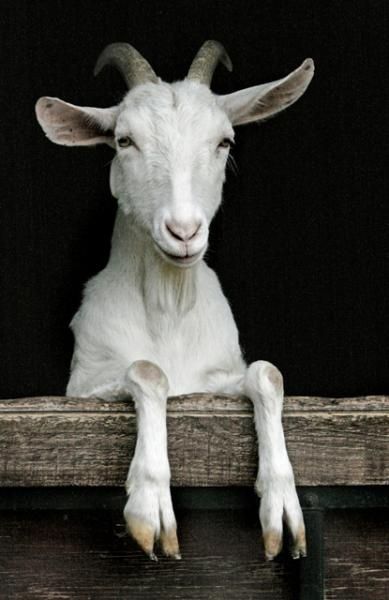 Lots of fresh water. Remember when I said that goats go to the bathroom a lot??
Lots of fresh water. Remember when I said that goats go to the bathroom a lot??
They drink enough to make up for it! It is so important for goats to have a steady, clean water supply! You might be lucky enough to have a creek in your goat’s pen, but if not, you’ll find yourself refreshing and cleaning their water supply daily.
In the winter, it is important for goats to have access to warm water. On the coldest days, I bring out buckets of warm water for my boys to enjoy. This is especially important for wethers, due to their risk for urinary calculi. Goats tend to drink less water in the winter, and by providing warm water, it will help them stay hydrated during the cold months.
De-Worming
Goats are susceptible to parasites of all kinds, especially stomach worms, which cause anemia and death. Just like any other animal, it is important to get on a good de-worming schedule.
We de-worm in the spring and in the fall. However, it will depend upon where you live – this article is very helpful for determination! Ivomec Plus or Ivermectin injectable (from the vet) is the best form of de-wormer for our goats, click here to see why.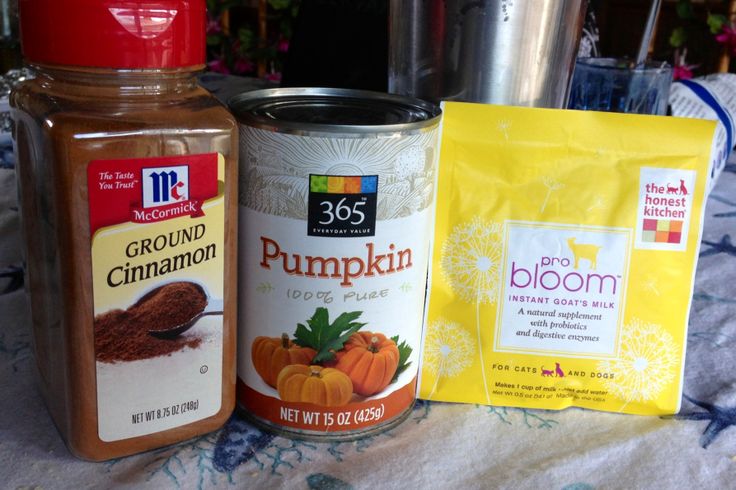
However wormers vary by location, my advice is to call your vet or speak with someone in your area with goats to find out which wormer they have found works best for them.
Hoof Trimming
Goat’s hooves must be trimmed every few months to keep them healthy. This is my least favorite chore – because it is a bit scary to do simply because the clippers are so sharp, and goats don’t generally tend to get excited about the task. This is a great article on how to trim your goat’s hooves.
You can’t just have one…
Goats are herd animals and depend upon each other for safety. In addition, they are actually quite unhappy when by themselves. Unless you spend countless hours with them daily, they will be lonely by themselves. When purchasing a goat, it is important to select two or more.
Wethers & Their Issues
Goats are susceptible to urinary calculi (kidney stones), especially wethers and bucks. When wethers are castrated, their urinary tract stops forming, and creates this high risk!
Prevention is the best form of treatment: lots of fresh water, and good quality hay.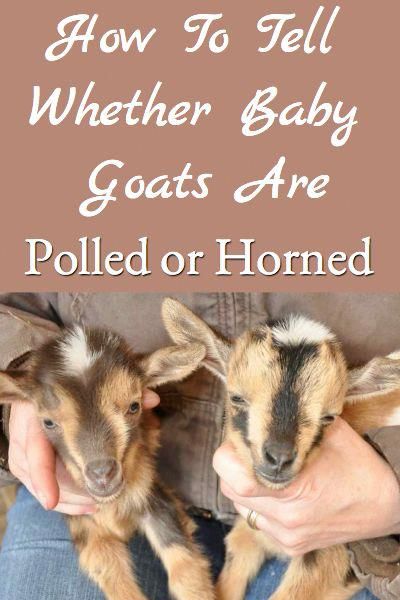 It is important to only feed male goats grass hay, roughage, minerals, and necessary supplements. Grain may also be useful, but only as needed, for example: kidding mothers, recovering animals, etc… Wethers do not need typically alfalfa or grain.
It is important to only feed male goats grass hay, roughage, minerals, and necessary supplements. Grain may also be useful, but only as needed, for example: kidding mothers, recovering animals, etc… Wethers do not need typically alfalfa or grain.
If you do feed grain / alfalfa it is important to offer a balanced formula that has the correct ratio of calcium:phosphate (2:1).
I encourage you to read about urinary calculi if you have wethers, it could save you a lot of trouble!
More about Raising Goats!
The Best Resources for Goat Care
Raising Goats: Keeping the Barn Clean
Grain & Alfalfa
This is so important, and many people do not know this: wethers do not tolerate alfalfa or high levels of grain well (as I mentioned above). If you are raising a show goat, meat goat, or doe – you will need to develop a specific feeding regimen that will probably include rations of alfalfa and grain; however, it is my personal opinion that wethers should not be fed alfalfa or grain due to their risk of kidney stones and because they have little physical needs.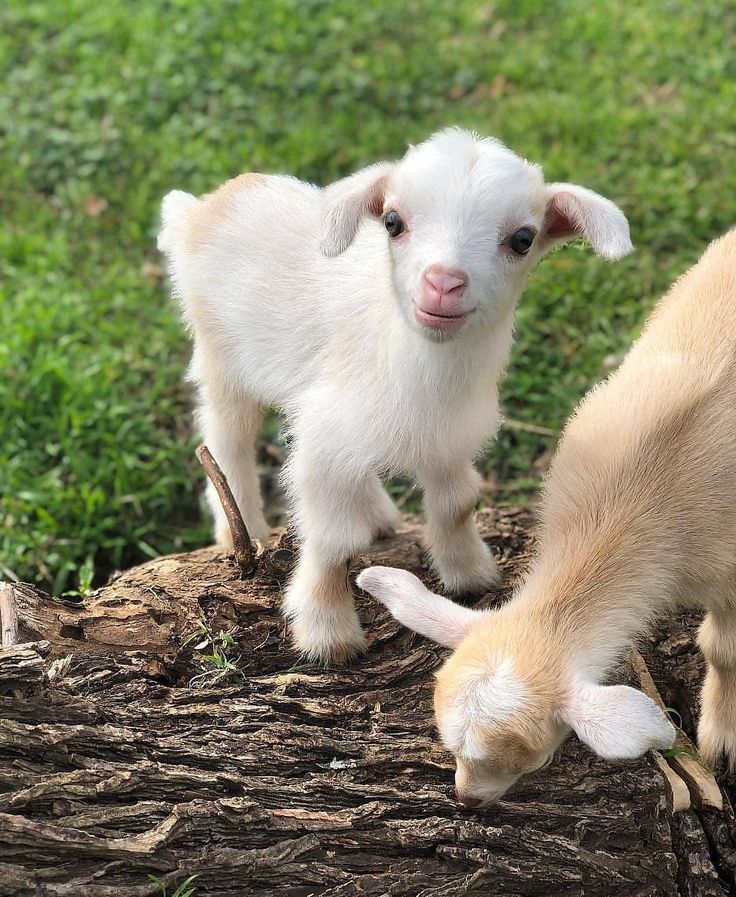 (Although mineral supplements are necessary.)
(Although mineral supplements are necessary.)
However, does (female goats) do not carry this risk and can enjoy alfalfa and grain. Alfalfa and grain can be useful for pregnant or nursing does, but are not entirely necessary.
Free Range Abuse
Goats don’t have a brain trigger that tells them when they’ve eaten too much. Since goats can so easily bloat, it’s important to monitor how much ‘free range’ time your goats are getting.
Goats are like deer rather than cattle, and will find the juiciest, yummiest brush to eat first. As you can imagine, an entire afternoon eating yummy greenery will result in a stomach ache, bloat, and possibly overeating disease.
Pro-Biotics
Goats are ruminants that rely on live bacteria in the stomach to digest their food. Sometimes this bacteria is disrupted and needs to be replenished: weather changes, antibiotics, stress… Anytime your goat experiences something out of the norm, it’s probably a safe bet to give them some pro-biotics. You can purchase a syringe of it, and give orally as needed.
You can purchase a syringe of it, and give orally as needed.
Wool & Winter Weather
In the winter, goats grow their own wool (or cashmere) undercoats to keep them warm. This, in addition to lots of grass hay, is generally enough to keep goats warm through the coldest temperatures, provided that they have proper shelter.
Goats will require a safe place from wind, rain, and snow with lots of dry straw. Their three sided shelter may need a bit more structure during these months to protect them from the elements. Ventilation is good, but drafts are bad because goats are very susceptible to pneumonia.
In extreme situations you may find man-made coats necessary. Personally, only one of my goats needs additional care. Elderberry grows a very strong winter coat; however, Buckwheat does not grow as thick of a coat, and I often find him shivering when Elderberry is completely fine.
Many people will tell you not to use a man-made coat because it will hinder the goat’s natural cashmere undercoat, but you will have to figure out what works best for your animals.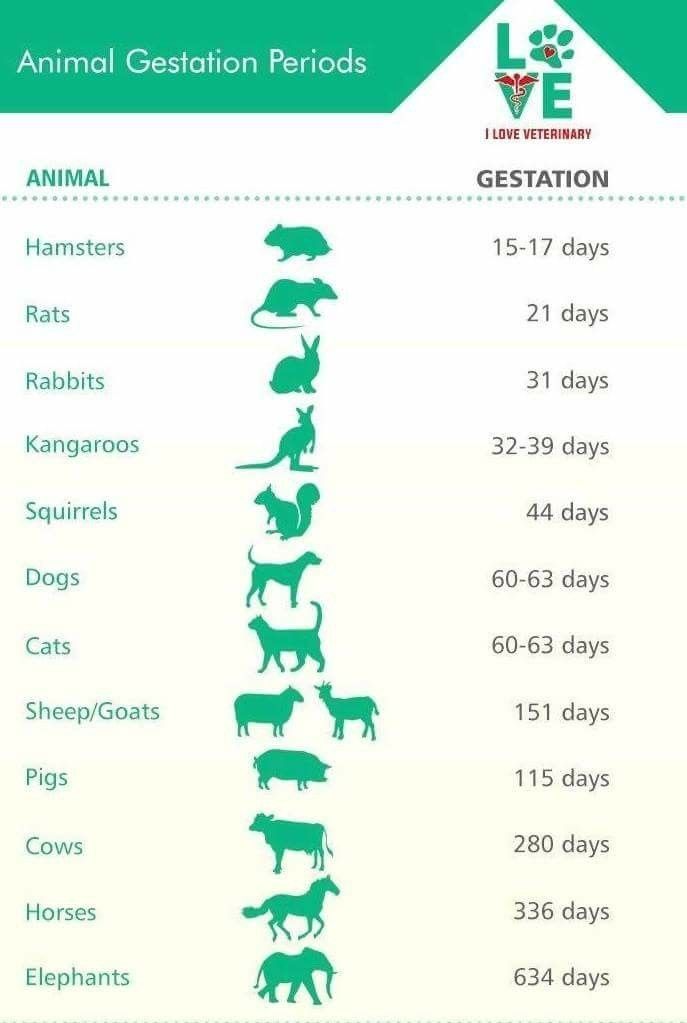 For me, a coat is only necessary at nighttime for Buckwheat when the weather is below 5 degrees.
For me, a coat is only necessary at nighttime for Buckwheat when the weather is below 5 degrees.
For more information, read this.
Disbudding & Dehorning
Disbudding and dehorning of your goat is your own personal choice. Many find it cruel to do and advocate against it (against disbudding: here | for disbudding: here). However, I opted to have my goats disbudded.
Disbudding happens when the goat is about a week old, a vet uses a hot iron to burn the base of the horn to prevent it from ever growing. It isn’t always successful, and ‘scurs’ may grow as the goat gets older.
Dehorning happens when the goat is older – as they do for cattle, the horn is cut at the base. Generally there is quite a bit of bleeding and it is very painful.
There is also a cream option for use, however the cream is very dangerous and has the potential to blind the goat.
If you prefer your goats to not have horns, try purchasing a naturally polled animal, as Elderberry was. If you aren’t able, then disbudding is the next best option, although it is still painful for the animal and not always 100% successful. You should do this within the first week of life. Typically goats will come already disbudded.
If you aren’t able, then disbudding is the next best option, although it is still painful for the animal and not always 100% successful. You should do this within the first week of life. Typically goats will come already disbudded.
Antibiotics to Keep on Hand
A goat’s normal temperature is 103 degrees F. If you suspect that your goat is sick, the very first thing you should do is take its temperature. To diagnose illness, click here. In general, I like to keep these medications on hand for quick treatment – it always seems that our goats get sick, at night, on a holiday, or on a Sunday!
Albon (Sulfadimethoxazine) • C&D Anti Toxin • CD/T Vaccine • De-Wormer • Corrid Powder • Vitamin B and C • Electrolytes • LA200
Bonus Point: Baking Soda
I have posted videos on social media of the goats enjoying baking soda, and every time I do, I get loads of questions about it! How much is too much? Do you give it to them every day? Can all breeds of goats have baking soda? Etc…
From what I have researched, all goats can enjoy baking soda, and similar to minerals, goats will eat baking soda free-choice, consuming as much, or as little, as they need.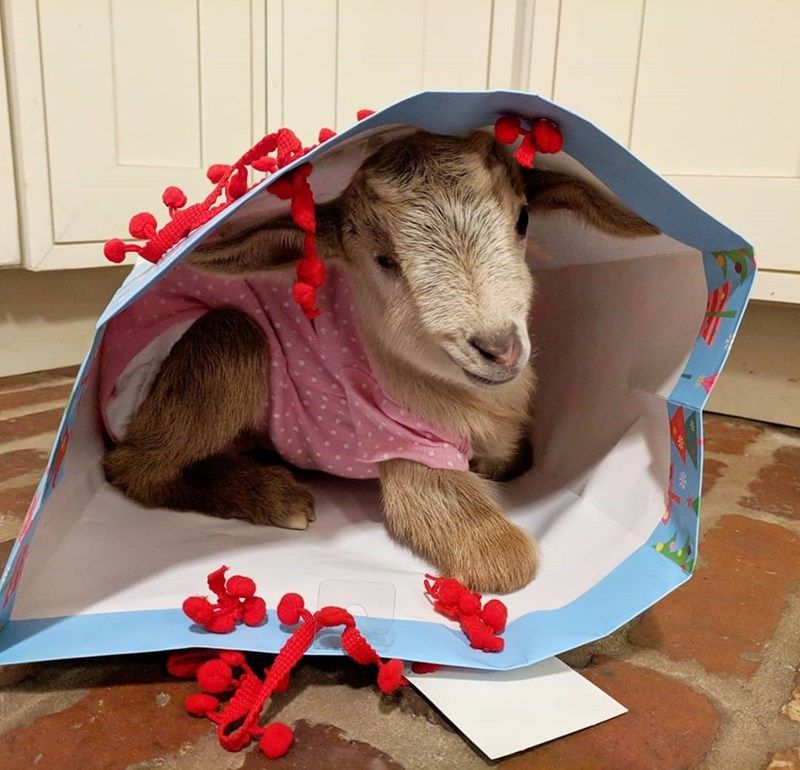 Baking soda is known to keep the rumen’s pH in balance and aid in digestion.
Baking soda is known to keep the rumen’s pH in balance and aid in digestion.
Do not give baking soda in a bottle or force baking soda. The goat will determine if they need or want it. Leave it out in a little dish for them to access if desired.
Baking Soda is known as an old timer’s bloat prevention trick. I haven’t found any studies done on baking soda proving its effectiveness. However, I have used it for years and it never fails to kick start the rumen whenever my goats eat some. I can literally hear it working.
I leave it out as a little insurance policy. Sometimes my goats eat it, sometimes they don’t, but it makes me feel better knowing it’s there.
Note: When I started offering mineral free choice, my goats became much less interested in the baking soda. I think goats have good instincts for this sort of thing (not so much when it comes to getting stuck in a fence or eating too many apples), and they will only eat as much as they need, but if you notice a goat eating an excessive amount of mineral or baking soda, remove it immediately and consult your vet!
I hope you have found this information useful! This is a basic list of general information that I think every new goat owner will appreciate having on hand.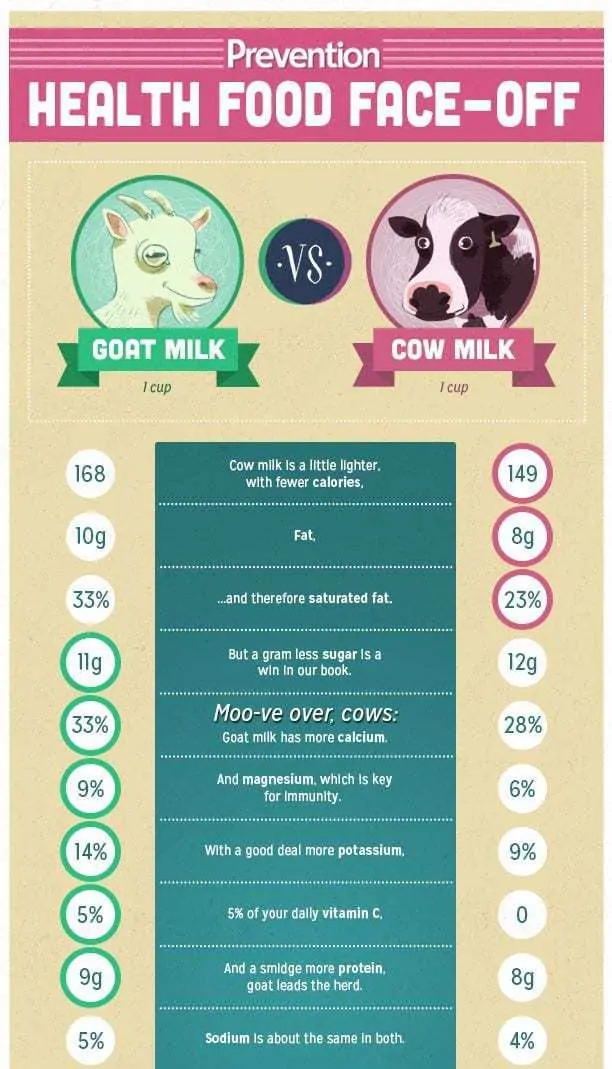 Goats are absolutely wonderful pets, in fact, they are my favorite pet! I consider my time with them therapeutic, and I think you will love adding them to your family. For a list of goat care resources, click here!
Goats are absolutely wonderful pets, in fact, they are my favorite pet! I consider my time with them therapeutic, and I think you will love adding them to your family. For a list of goat care resources, click here!
What Do Baby Goats Eat? What You Need To Know!
If you are a farmer or have recently acquired a baby goat, you may be wondering what to feed them. Providing baby goats with the right care, shelter, maintenance, and diet are crucial to ensure that they become healthy adults in the future.
Fortunately, baby goats’ diets are generally uncomplicated and easy to provide. The life stage of your baby goat will affect the type of food they should be fed. In the case of a newborn goat, you may even need to bottle feed them.
In this article, we will cover all the information you need to know about feeding your baby goat a high-quality diet to ensure that they can grow and develop properly.
Identifying Your Baby Goats Life Stage
To start, a baby goat is referred to as a ‘kid’, and it is what most farmers and agricultural veterinarians will call baby goats, so we will refer to baby goats as a kid throughout some parts of this article..jpg) If you are new to farming and baby goats, then this may not be something you may have known.
If you are new to farming and baby goats, then this may not be something you may have known.
If your mother goat has recently given birth, then her offspring is considered a newborn. They are in their earliest life stage and will not be able to eat solid food until they are around six to eight weeks of age. During this time, the baby goat will have been weaned from their mother and solid foods can be gradually introduced into their diet.
Image Credit: slowmotiongli, ShutterstockIf the newborn goat does not feed on the mother, you must start feeding them colostrum through a bottle. Colostrum naturally comes from the mother and is high in nutrients and immune-building properties. You can purchase agricultural milk replacement from your local agricultural feed store which contains high amounts of colostrum.
After eight weeks, your kid is ready to eat solid foods and refuse milk. Their diet will vary in comparison to adults, as their solid foods should be rich in nutrients to accommodate your baby goat’s essential growth stage.
How to Bottle Feed Baby Goats
If you do decide to bottle feed your newborn goat the first step is to positively introduce them to bottle feeding. Start by squeezing the bottle into their mouth until a bit of milk comes out. This will help them associate the bottle with milk and therefore encourage them to drink from the bottle.
Newborn goats should be fed up to four times a day for the first few weeks. After they are a month old, you can begin to reduce feeding to three times a day. With the help of an agricultural veterinarian, you will be able to monitor the exact amount of minerals and other supplements to add to the milk’s mixture. Late kids can be fed goat’s milk from another nursing or pregnant mother, lamb-milk replacer, or cow’s mild. If you decide to feed the kid fresh milk, the milk should be pasteurized or purchased from stock that is certified to be free of the encephalitis (CEA) virus, paratuberculosis, and mycoplasmas, and in some cases heat treatment may be necessary.
These items are essential when you are bottle-feeding a newborn goat:
- A baby bottle suitable for baby goats and other farm animals
- Lamb or goat nipple teat
- Goat milk replacement formula (We recommend Manna Pro Milk Replacer with Probiotics to get started)
- Colostrum replacement powder
- Supplements provided by an agricultural veterinarian
Newborn goats should be fed between 10% to 12% of their body weight per day and should be provided with sufficient milk or milk replacer within regular intervals to achieve optimal growth.
What Do Baby Goats Eat?
You can determine if a baby goat is weaned when they start to prefer solid foods over milk. Baby goats should have access to grain-based creep feed and hay as early as one week of age, but they will primarily drink milk during this time.
A baby goat’s primary diet consists of around 80% of high-quality hay, and 5% should consist of goat feed grains.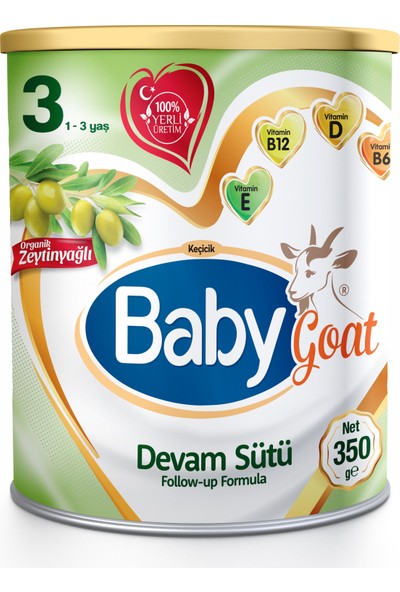 The remaining percentages of a baby goats’ diet should consist of pasture, weeds, and hay pellets. It is important to note that goats are ruminants, which means that they have a four-chamber stomach. Roughage is necessary to help the rumen function properly.
The remaining percentages of a baby goats’ diet should consist of pasture, weeds, and hay pellets. It is important to note that goats are ruminants, which means that they have a four-chamber stomach. Roughage is necessary to help the rumen function properly.
After your kid has been weaned, other solid foods should slowly be introduced into their diet to avoid digestive issues such as bloating. It is very common for your baby goat to experience constipation or diarrhea due to fast dietary changes. Hay pellets may be a good idea to feed to young baby goats before introducing them to fresh roughage. This is because hay pellets are a more easily digestible form of hay.
Here is a quick rundown of a baby goats’ diet after eight weeks of age:
| Hay (or hay pellets) | 75-80% |
| Goat feed (grains) | 5% |
| Pasture | 5% |
| Weeds | 2-5% |
Safe Plants and Weeds for Baby Goats
Baby goats are browsers and although many people believe they can eat anything, there are certain foods you should avoid feeding your baby goat as they may be poisonous, and there are also certain foods that many farmers and agricultural veterinarians recommend.
- Fresh grass
- Clover
- Dandelions
- Maple leaves
- Roses (leaves, hips, flowers)
- Blackberries
- Kudzu
- Apple leaves
- Musk thistle
- Horseweeds
- Burdock
What Foods Should You Avoid Feeding Baby Goats?
It is important to not keep your baby or adult goats in a pasture where azaleas or rhododendrons are growing as these plants are poisonous to goats. In addition, feeding baby goat old food that has been sitting in the heat or gathering moisture may grow mold that can cause your baby goat to fall ill. Care should be taken to ensure that your baby goat’s main feed is stored correctly and replaced when necessary.
Image Credit: PiqselsAvoid Feeding (Warning):
- China berries
- Dog fennel
- Pokeweed
- Redroot
- Bracken fern
- Eastern Baccharis
- Honeysuckle
- Crotalaria
- Virginia creeper
- Black cherry
- Pigweed
Take caution to ensure that the pasture is free from all poisonous plants as they can harm your goat.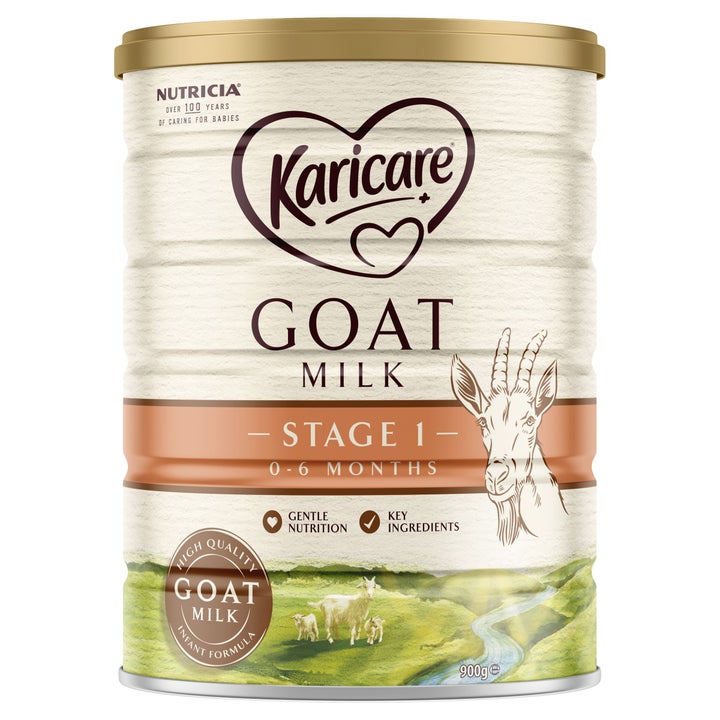 Baby goats are curious and will eat most plants and weeds growing in the pasture. Contact your local agricultural veterinarian if you suspect your baby goat may have consumed a poisonous plant. Take a sample of the plant with to the veterinarian so that the right treatment can be administrated.
Baby goats are curious and will eat most plants and weeds growing in the pasture. Contact your local agricultural veterinarian if you suspect your baby goat may have consumed a poisonous plant. Take a sample of the plant with to the veterinarian so that the right treatment can be administrated.
- You may also want to read: Can Goats Eat Bananas? What You Need to Know!
Final Thoughts
Feeding your baby goat is easy once you understand their basic dietary requirements. The main concern when it comes to feeding kids is to ensure that the diet is balanced and suitable for their life stages. A baby goat fed correctly will grow to be a healthy and proportionate adult with a hearty appetite. Feeding your baby goat is a rewarding experience, and their eagerness to feed is admirable by many owners.
You May Also Like:
- Can Goats Eat Cucumbers? What You Need to Know!
- Can Goats Eat Cabbage? What You Need to Know!
- Can Goats Eat Strawberries? What You Need to Know!
Featured Image Credit: AllaMosurova, Shutterstock
How to feed a goat to give more milk
How to feed a goat to give more milk
Breeding goats in 2022 is only gaining momentum. On the forums, beginners and experienced goat breeders share advice on which breed is better - Saanen or Nubian, how to feed a goat at home. Indeed, almost half of the productivity of the MRS depends on the diet. We'll talk about him today.
On the forums, beginners and experienced goat breeders share advice on which breed is better - Saanen or Nubian, how to feed a goat at home. Indeed, almost half of the productivity of the MRS depends on the diet. We'll talk about him today.
What can you feed a goat?
Succulents
This category includes root crops (carrots, beets, Jerusalem artichoke, boiled potatoes), pumpkin, zucchini, watermelons, vegetable tops, fruits. Juicy food, especially in summer and autumn, is a valuable source of vitamins, fiber and minerals. A goat is given 2 kg of this feed per day.
Roughage
Hay, straw and brooms from twigs are popular, cheap forages. Roughage is valued as a source of fiber necessary for the digestion of ruminants. A goat is fed up to 2 kg of roughage per day. From the point of view of nutritional value, meadow, legume-grass, cereal hay harvested in the phase of flower budding is considered ideal.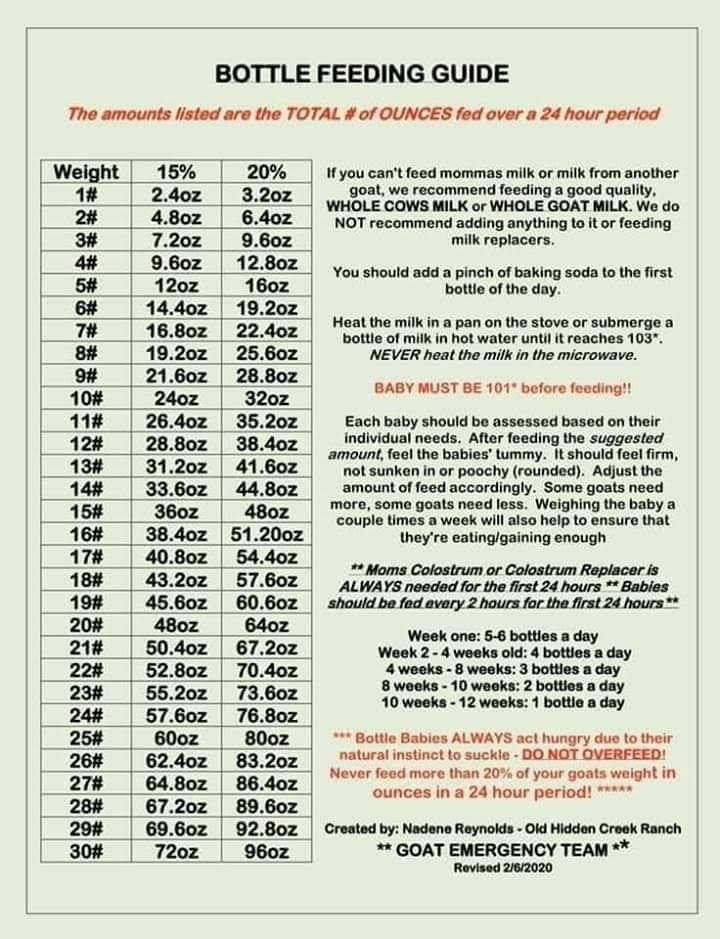 Straw is more often used wheat or barley, but even corn stalks, previously crushed and steamed, goats gnaw well in winter. nine0003
Straw is more often used wheat or barley, but even corn stalks, previously crushed and steamed, goats gnaw well in winter. nine0003
Branch brooms are a valuable nutritional supplement in the diet of a dairy goat. The best raw material is fruit trees after spring pruning. With non-fruit fit maple, willow, birch, aspen, linden. The branches are cut into twigs of 60 cm each, tied with twine into brooms, hung down with leaves in a shady place in a draft.
Concentrated feed
is one of the most expensive feeds. Without grits of cereals, soybean meal, sunflower meal, it is difficult to achieve a high milk yield. But the main thing is not to overfeed the animal. Daily Value compound feed for goats or derti - up to 1 kg. If you feed more, then the animal will quickly get fat, it will be bad to come to the hunt.
If you have your own grain base, then a home-made mixture of crushed corn, wheat, barley will do. Some owners brew chopped grains with boiling water, leave to infuse for 12 hours.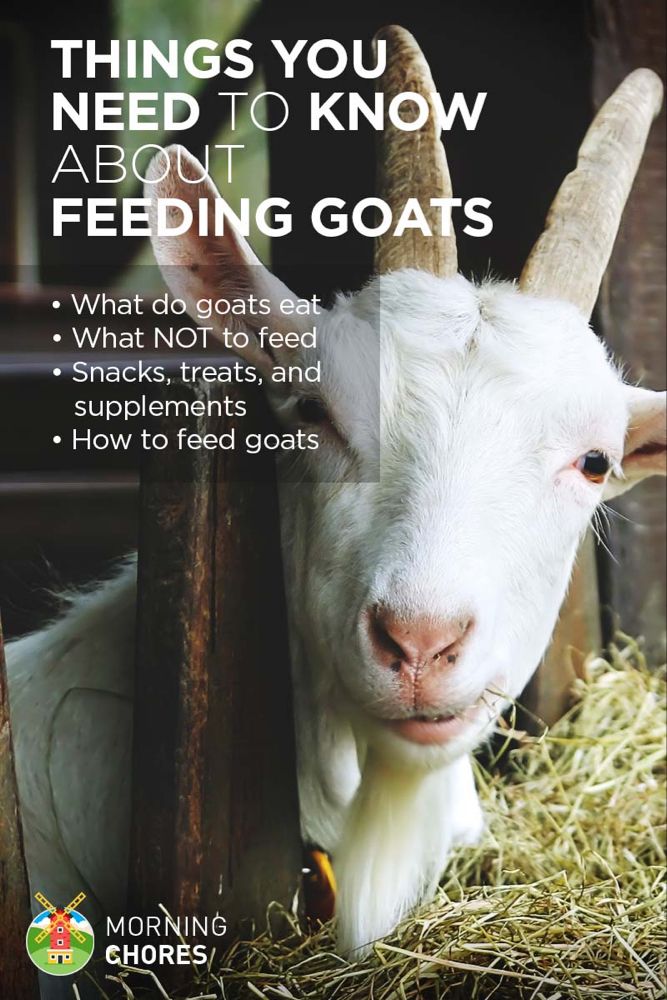 This preparation increases the digestibility of the grain. The introduction of cake or meal into the diet has an immediate positive effect on the level of goat milk production. A small handful of protein concentrate is poured with boiling water, leaving it to swell. nine0003
This preparation increases the digestibility of the grain. The introduction of cake or meal into the diet has an immediate positive effect on the level of goat milk production. A small handful of protein concentrate is poured with boiling water, leaving it to swell. nine0003
Silage
This type of food is rarely used in home gardens for feeding goats. Although it is easy to prepare, it is cheap. It is very nutritious and keeps well.
Goat silage is prepared from milky corn, beet tops, cabbage leaves, sunflower, amaranth. To slightly reduce the acidity of the finished product, the green mass is dried up to 70% before being placed in silo pits or big bags. To do this, dry in a draft, add straw, hay to the wet mass. If you want to get the highest quality product, then use special preparations for ensiling, preservatives based on a cocktail of microorganisms, organic acids. nine0003
In winter, goats are given up to 4 kg of silage. Therefore, in the summer, green mass is laid at the rate of 8 centners per 1 head.
What should not be fed to goats? peroxide silo. If the food has a sour, unpleasant smell, then it is better not to give it. Otherwise, the milk will also turn out with sourness and a silage smell, it will be poorly fermented with starter cultures.
Other types of food
Juicy, coarse and concentrated food is not enough. A high-yielding goat needs sources of vitamins and minerals. Their source is special BMVD, salt slimes or melasny blocks. Animals with interest eat such supplements. A salt lick or a block of molasses is constantly near the feeder. Young animals are taught to such additives from 3 months. nine0003
Feeding goats in winter
In winter, the basis of the diet of dairy goats, replacement goats, young animals is hay, straw, concentrated feed. For 1 head, it is necessary to prepare up to 500 kg of hay for the period of stall keeping (from October to the end of April). One straw and hay will quickly get tired of the animals. You can diversify the diet with brooms from twigs. They will also help to improve digestion with diarrhea in young animals (willow, alder, poplar). If possible, then feed the animals with sprigs of pine, spruce. Coniferous trees are an excellent source of vitamins and minerals. nine0003
You can diversify the diet with brooms from twigs. They will also help to improve digestion with diarrhea in young animals (willow, alder, poplar). If possible, then feed the animals with sprigs of pine, spruce. Coniferous trees are an excellent source of vitamins and minerals. nine0003
Do not forget about end feeds, which are given up to 1 kg per day. Fresh carrots, cabbage, beets, boiled potatoes will serve as a good help. If you keep not only adult animals, but also young animals, then AVA ZDOROVA MPS Start - starter granulated feed for goats from 0 to 3 months and AVA ZDOROVA MPS Grover - grower granulated feed for goats from 3 to 6 months will come in handy. A complete kibble feed will help grow a strong goat, wean early at 10 weeks, prepare the digestive system for eating roughage. High protein content, balanced composition will allow you to achieve stable weight gain even during the stall period in the cold season. nine0003
Feeding goats in the summer
Feeding dairy goats is much easier in the warm season when pasture is available. Here, the animals eat plenty of green fodder, get exercise and a portion of vitamin D. On average, a goat eats 4 kg of grass per day while grazing. But for a high-milk animal, it is necessary to receive a portion of concentrates at least 2 times a day. Feeding time is different for each farmer. Some give grain in the morning before pasture and in the evening before going to bed. Others every time they are milked. nine0003
Here, the animals eat plenty of green fodder, get exercise and a portion of vitamin D. On average, a goat eats 4 kg of grass per day while grazing. But for a high-milk animal, it is necessary to receive a portion of concentrates at least 2 times a day. Feeding time is different for each farmer. Some give grain in the morning before pasture and in the evening before going to bed. Others every time they are milked. nine0003
Feeding 1.5 kg of bean hay at bedtime has a good effect on the milk production of a goat. Dried clover, alfalfa, sainfoin are an excellent source of protein. In summer, goats are fed chopped vegetables, fruits from the garden. They especially like apples and pears.
Animals willingly eat the young shoots of cherry, poplar, willow, aspen, mountain ash trees. Goats also eat heather herbs, nettles in any form, fireweed.
Dairy diet example
The amount of feed is always calculated taking into account the productivity of the animal, its lactation and age. For example, if we want a goat to give 4-5 liters of milk per day, she needs to provide a diet of four feed units - this is about 4 kg of oats in a different set of feeds. Plus, it is necessary for the goat to drink 1.4 liters of water per 1 liter of milk (excluding life support).
For example, if we want a goat to give 4-5 liters of milk per day, she needs to provide a diet of four feed units - this is about 4 kg of oats in a different set of feeds. Plus, it is necessary for the goat to drink 1.4 liters of water per 1 liter of milk (excluding life support).
There are ready-made diet recipes for highly productive goats, goats of the first or second half of pregnancy.
| Animal group | Types of feed | ||
| Compound feed | Root vegetables | Roughage | |
| Highly productive goats | 0.4 | 2 | 3.5 |
| Goats that produce less than 2 liters of milk per day | 0.3 | 1.5 | 3.7 |
| Goats of the first half of pregnancy | 0.25 | - | 2.4 |
| Cosi of the second half of pregnancy | 0.5 | 0.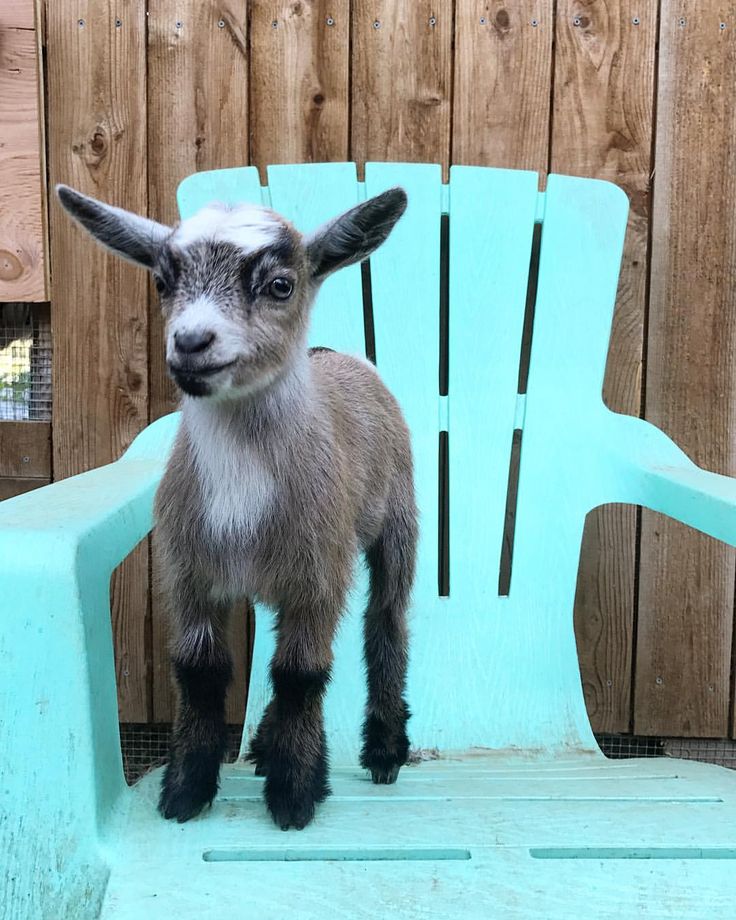 5 5 | 2 |
In addition to a complete, balanced diet, a goat needs constant access to water. When dehydrated, the most productive animal will not please with a good milk yield.
What not to feed a goat
Although the animal seems to be almost omnivorous and unpretentious, do not forget that certain foods can distort the taste of milk, lead to poisoning and death. Livestock specialists and veterinarians remind that it is strictly forbidden to give:
- moldy food. Mycotoxins secreted by the fungus poison, lead to diarrhea, in especially large doses - to abortion of pregnant goats;
- Compound feed that has expired. Even high-quality compound feed cannot be stored forever. For most manufacturers, the feed solution for the animal is calculated for 6 months from the date of production. Expired feed, at best, loses its nutritional, energy, biological value;
- over-dried hay and straw that crumble into dust. In such roughage, fiber is of poor quality, there are practically no nutrients; nine0131
- green potatoes.
 The poisonous substance corned beef appears in it, which causes digestive disorders;
The poisonous substance corned beef appears in it, which causes digestive disorders; - give up pastures that are directly adjacent to waste bins, railways, highways. This grass contains a lot of heavy metals that enter the milk;
- do not feed belladonna, datura, spurge;
- Whole roots. With them, the animal can choke and suffocate;
- dirty water. Wash drinking bowls regularly, change the water at least once a day
Now you know how to feed a goat to get the most delicious, healthy goat milk.
How and what to feed a goat
A goat must receive a certain amount of quality feed daily to ensure productivity at the required level (this is especially true for dairy goats) and normal growth (fatness). In this article we will tell you how to properly feed goats .
| Popular telegram channel about Dacha and Dacha Councils GO |
Content
- 1 feed and features of their cottage
- 2 Feeding routine
- 3 DISCOUNESS
- 3.
 1 example diet for goats in the 1st half of pregnancy:
1 example diet for goats in the 1st half of pregnancy:
- 3.
- 4 Feeding goats in winter
- 5 Feeding goats
Feed and features of their dacha
Larger and heavier goats require more feed, as do growing goats.
| Note. Goats with high milk yields (for example, Saanen breed) are fed more abundantly than low-yielding goats. Dairy goats (compared to dry ones) and pregnant goats should also eat more varied and more. |
The basis of feeding goats in the summer is green grasses, which are the best succulent feed for these animals, in the winter months - roughage. Especially small cattle like to eat young forest and meadow hay. An adult goat should receive roughage from 1 to 3 kilograms per day. 50% of the daily hay supply can be replaced with dried wood brooms. nine0003
Brooms should be harvested during the first two months of summer. Goats eat brooms of birch, linden and aspen, alder, poplar and willow, hazel, as well as maple, elm, acacia, and mountain ash.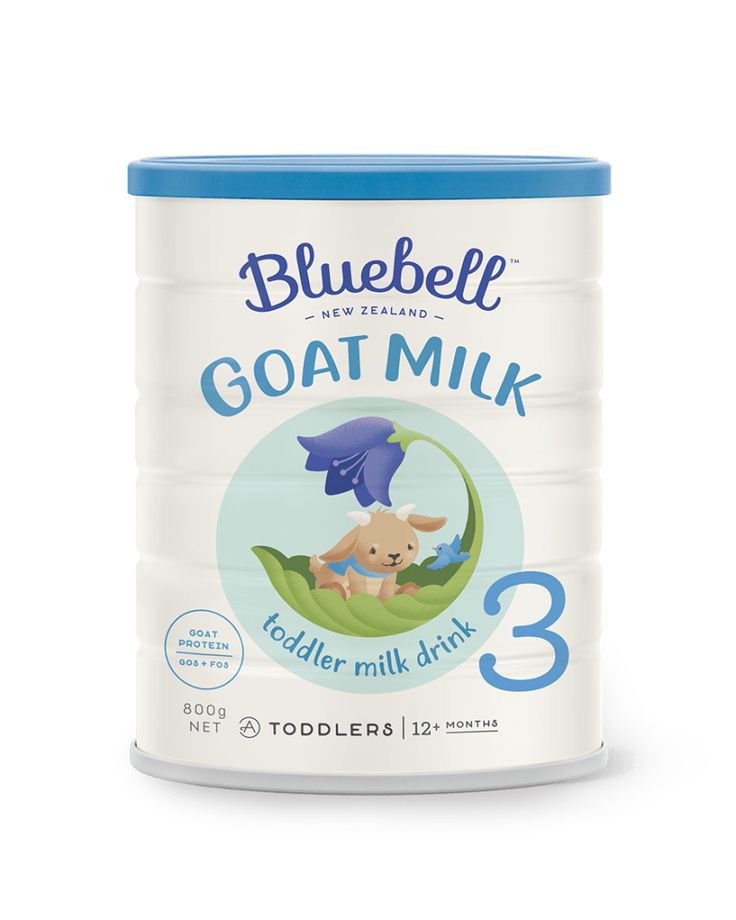 Harvested branches should be half a meter long, no more than 1 centimeter thick. The thickness of the beam is about 10 centimeters. Dry bunches of branches for two weeks in a place protected from direct sunlight and moisture - in the attic or under a canopy.
Harvested branches should be half a meter long, no more than 1 centimeter thick. The thickness of the beam is about 10 centimeters. Dry bunches of branches for two weeks in a place protected from direct sunlight and moisture - in the attic or under a canopy.
In the photo there is a device for feeding goats in the general herd (so that everyone gets a cutout for the approach of an individual animal)
When feeding goats in winter, they are given 3-5 brooms from tree branches per day (2-3 in the daytime and 1-2 before night.
| Note. feed |
Worthy food for goats is cabbage leaves and tops of carrots and beets. They are given up to 4 kilograms per day per head. You can also give beveled potato tops - at the rate of up to 2 kilograms per day.
Cabbage, fodder beets and potatoes, vegetable waste - all this is the best food in the stall period. Goats are given 1-2 kilograms of boiled potatoes per day (occasionally it can be given raw), chopped root crops - up to 4 kilograms.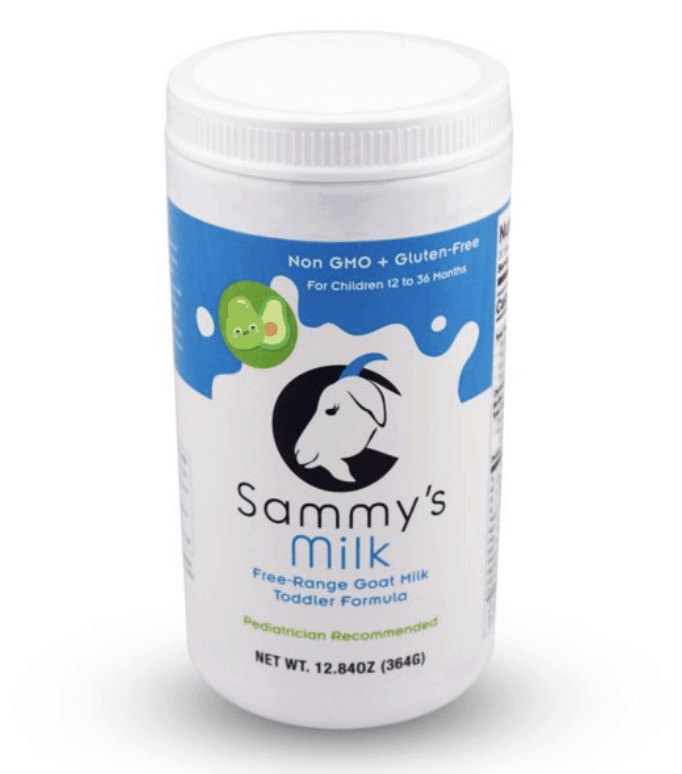 Avoid feeding green potatoes - goats can get poisoned! nine0003
Avoid feeding green potatoes - goats can get poisoned! nine0003
| Include a kilogram of root vegetables in the diet of young goats up to 9 months of age. |
Feeding routine
Feeding should be built in a certain routine. To get a high milk yield from a dairy goat, feed it 3 times: the first at 7 am, then at lunchtime, and the last time at 7 pm. Keep equal intervals between feeding and milking. The best period for milking is after feeding or while the goat is eating roughage. nine0003
Make no mistake - many goat breeders during the summer grazing period give the animal only water in the morning and evening, without feeding. It is not right.
| Note. A goat in the summer grazing period eats up to eight kilograms of grass a day, which allows it to give up to 2.5 kilograms of delicious milk without any problems! |
Sequence of feeding:
- swill with the addition of compound feed.
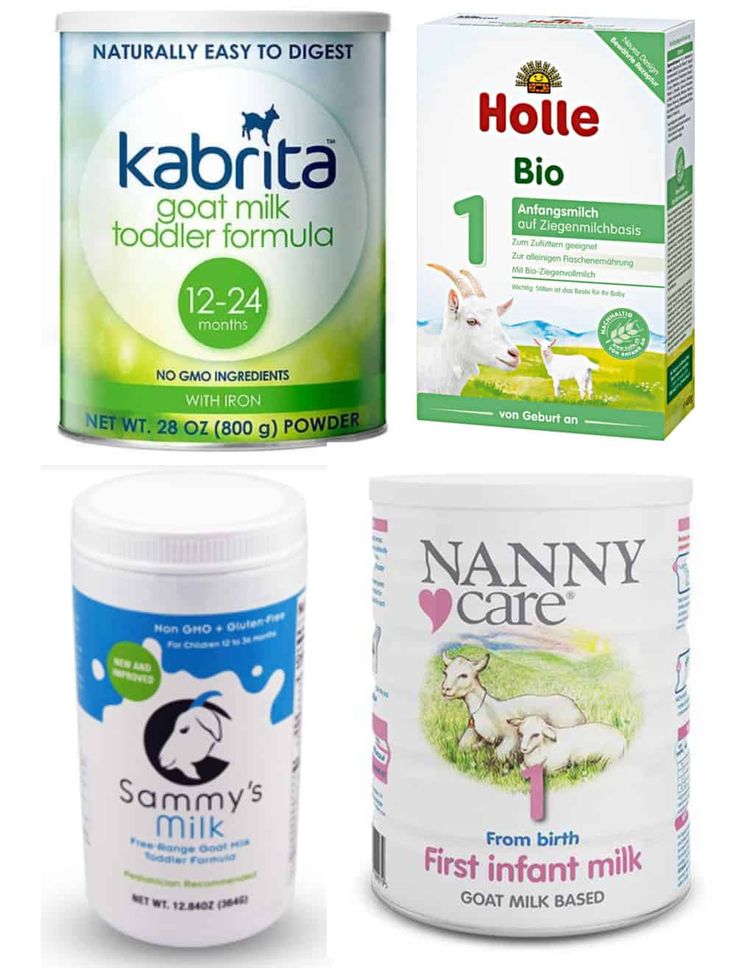 nine0131
nine0131 - then juicy.
- and last but not least, roughage.
Silage is best eaten by goats in the morning or during the daytime.
In the evening it is advisable to give easily digestible food.
| Note. The best feed for queen goats include fresh grass, grass flour, concentrated feed, hay and haylage, roots and tubers. |
When feeding dry mixed fodder, goats should be given plenty of water at least twice a day, 3-4 liters of water at a time. The optimum water temperature for soldering is 8-10 degrees, which corresponds to the temperature of the content. Cold water to goats, in order to avoid diseases, should not be given. nine0003
When feeding waste from the kitchen and compound feed with swill, also do not forget to give the goats clean water to drink.
Rations
An example of a ration for a highly productive dairy goat:
- hay - 2.
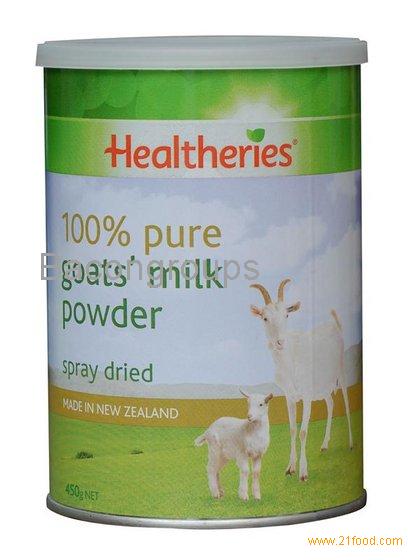 5 kilograms.
5 kilograms. - compound feed - 400 grams.
- root vegetables - 2 kilograms.
- wood brooms with leaves - about 1 kilogram.
- barley, oats - half a kilo.
Do not forget to give concentrated feed to high-yielding goats: pea flour, compound feed, etc.! nine0003
Ration for a milk yield of not more than 2 kilograms:
- meadow hay - 2 kilograms.
- bran - 700 grams.
- peas (dry) - 420 grams.
- cabbage and beet leaves, carrots, beets - kilogram.
In general, grain is not fed to dairy, and not only goats!
An example of a diet for goats in the 1st half of pregnancy:
- hay - 800 grams.
- bran - 250 grams. nine0131
- straw (preferably oat, barley) - 950 grams.
With the introduction of compound feed into the diet:
- compound feed - 250 grams.
- hay - 400 grams.
- straw, brooms - 2 kilograms.

Photo of eating a broom
Diet in the second half of pregnancy:
- hay - 1.5 kilograms.
- straw - half a kilo.
- boiled potatoes - also half a kilo.
- compound feed (or you can replace it with bran) - half a kilo. nine0131
| Note. There is an opinion that barley should not be included in the diet of goats, allegedly it is harmful to them. But this is not true. Barley can be included in the daily diet, it is also widely used for fattening young animals for meat. But do not overdo it in giving barley during the dry period, because. this can lead to goat obesity. |
Goats of any breed should be constantly given mineral supplements:
- queens (in the 2nd pregnancy) along with food are given ground chalk and bone meal - 10 grams per day, and goats older than 1 month - 8 grams. nine0131
- edible salt is given to a pregnant goat - about 10 grams per day, single - 7 grams.
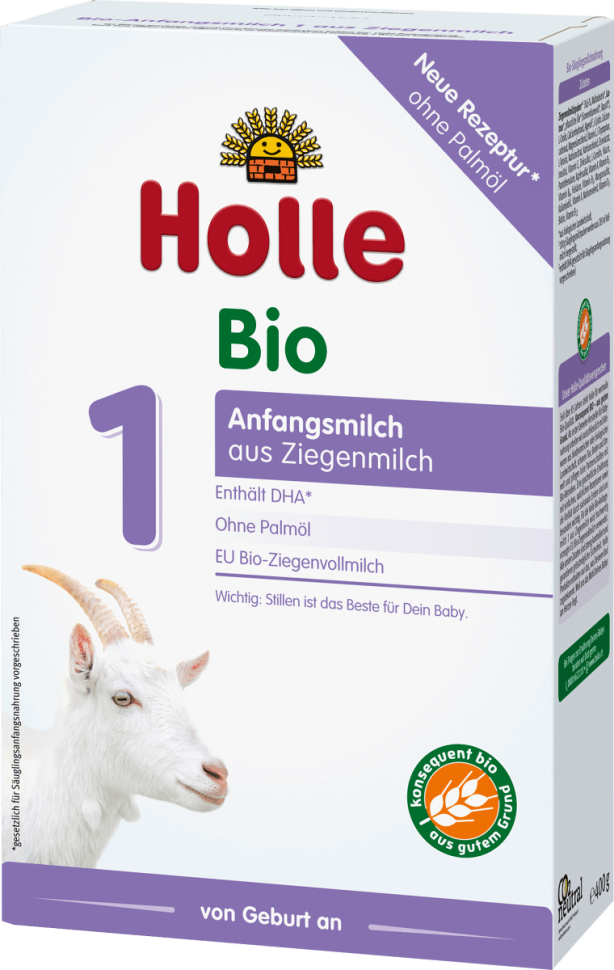
Feeding goats in winter
One adult goat in winter (this is an average of 7 months) needs about 530 kilograms of roughage. This amount includes: approximately 260 kg of hay and 540 kg of brooms. For 1 head of goat young at the age of six months to a year, three centners of hay should be prepared for the winter (more precisely, a little more - about 330 kg).
| Note. When fattening a goat, hay can be replaced with tree branches with leaves - 1 kg of hay replaces 2 kg of branches or 1.5 kg of dried leaves (peeled and dry leaves of shrubs and trees, compared to branches, are more nutritious for goats). Also in winter, up to half of the roughage in the diets of goats can be replaced with silage. During lactation, it is given to a goat in an amount not exceeding 3 kilograms per day. |
In winter (stall period) you can follow the following feeding schedule:
- in the morning - feeding swill (with the addition of mixed fodder), then various root crops are given, after - milking, roughage.

- lunch - the goat is given silage or root crops, swill from kitchen waste, after - milking, the issuance of roughage - hay or brooms.
- evening - moistened concentrated feed, watering, 2 brooms.
Feeding goats
In the off-breeding period, producers need to provide the following feed ration:
- 1 kg potatoes or root crops (succulent food).
- about 2.5 kilograms of quality hay (roughage).
- concentrates in the amount of 300 grams.
In summer, goats are fed with the same amount of concentrates. A month and a half before mating, goats are grazed on a pasture with high-quality grass and given 0.85-1 kilogram of concentrates.
During breeding season goats-producers need carotene. Give them foods rich in this provitamin - carrots and rose hips, as well as plant leaves.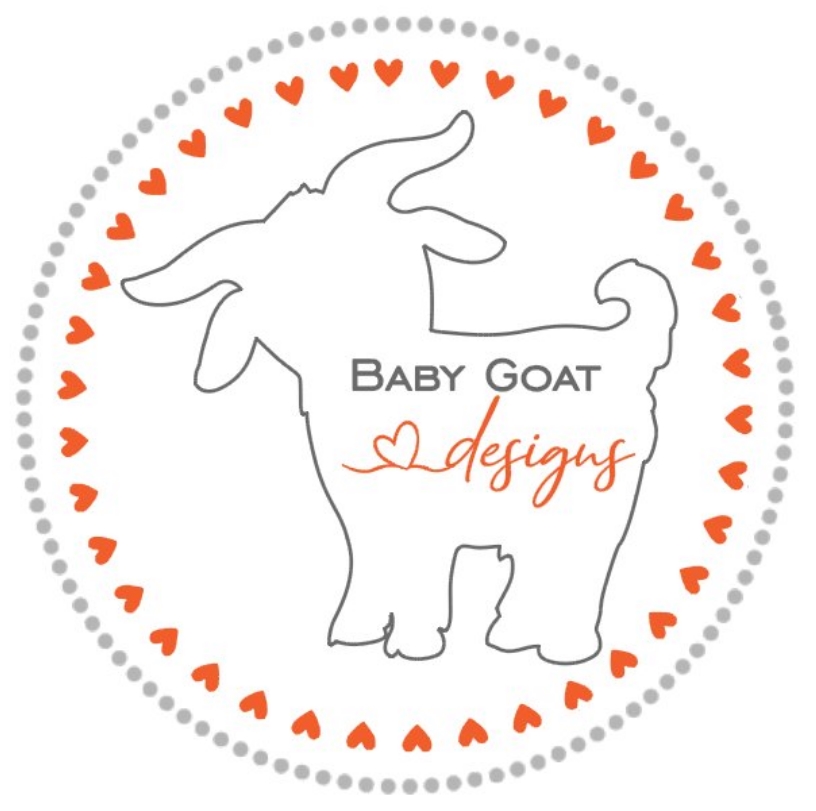 |


